#vap comics
Explore tagged Tumblr posts
Text
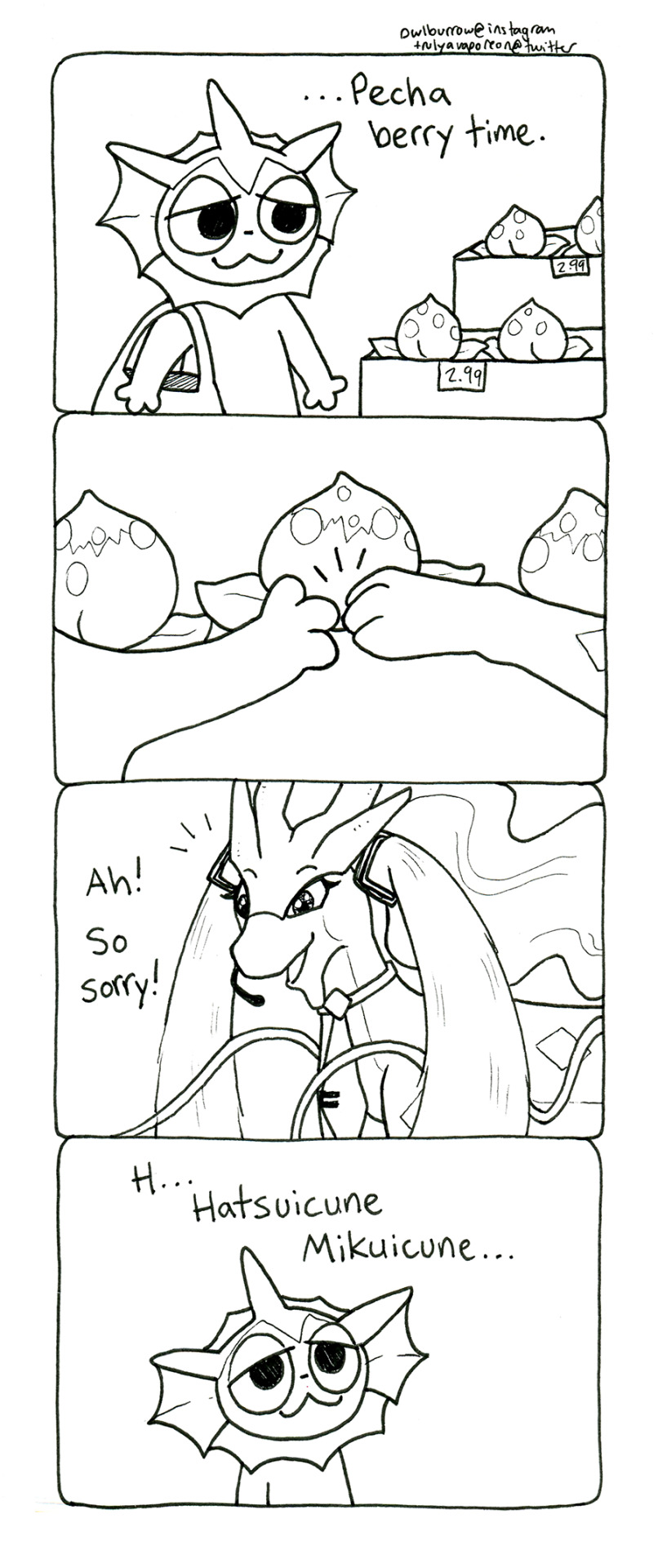
Celebrities shop too 🍑
13K notes
·
View notes
Text
an emotional support pillow and his awkward future father in law
by thequestionisalwaysmangos Bruce was not expecting to find Clark’s clone watching HGTV in his manor at seven in the morning, but that’s what he got. Words: 885, Chapters: 1/1, Language: English Series: Part 4 of unrelated dc one-shots Fandoms: Batman - All Media Types, Batman (Comics), DCU (Comics) Rating: Not Rated Warnings: No Archive Warnings Apply Categories: M/M Characters: Bruce Wayne, Kon-El | Conner Kent, Jason Todd Relationships: Pre-Tim Drake/Kon-El | Conner Kent - Relationship Additional Tags: Tim is technically present, Awkward Conversations, Kon is still pissed about the Titans Tower thing but he’s biding his time, Bruce is a Very Awkward Person, a VAP, if you will, Kon isn’t even dating tim yet, but he knows his competition and is already gunning for favorite son-in-law via https://ift.tt/wfLJnN5
5 notes
·
View notes
Text
A hat full of shit
Just a very short post compared to others this time. Lets start by playing a game, shall we? Can you identify the difference between these two pics of Dobson?
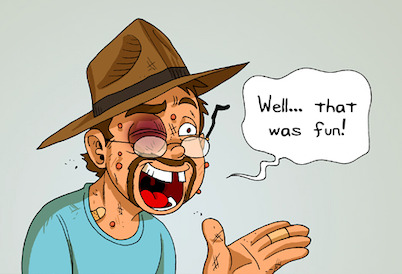
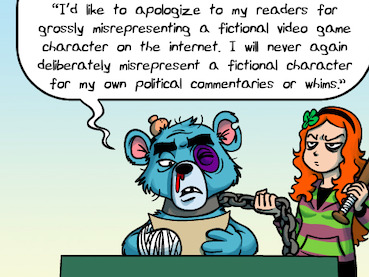
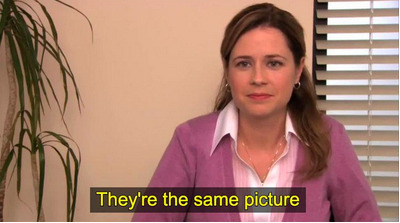
And no, just because they show the same douchebag, they are not the same. Cause in one pic, something important is missing!
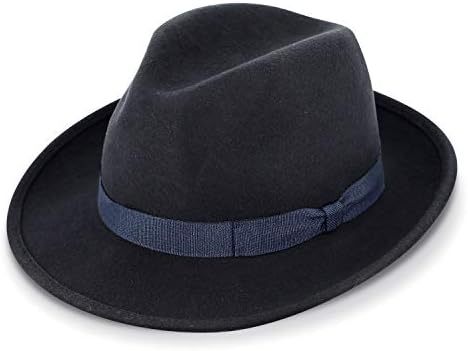
Yeah, that's right, the hat. To be more precise, the fedora Dobson would like to draw himself with, based on the fact that at least ever since college Dobson had been a fedora wearer in real life. Likely to hide his eggshaped, bald calvaria.

Now frankly, I don't think the fedora as a hat in itself is something terrible. In fact, it is actually something of a feministic icon, originating from a headpiece a female character named "Princess Fedora Romanova" wore in a theater play called "Fedora" by the french writer Sadoun from 1882. The character even played by a highly respected actress at the time called Sarah Bernhardt. And after it got popularity via the play, it was worn mostly by women in the late half of the 19th century -particularly members of the first feministic movements- it became popular with men in the 1920s all over the world, especially in America where it was famous during the prohibition, the 40s-60s, in Hollywood movies (particularly the detetive noir ones of the time) and so on.
Nowadays however... well, we all know the memes, how the fedora is something of the first indicative piece of clothing a fake feminist or unhinged social justice warrior likes to wear.

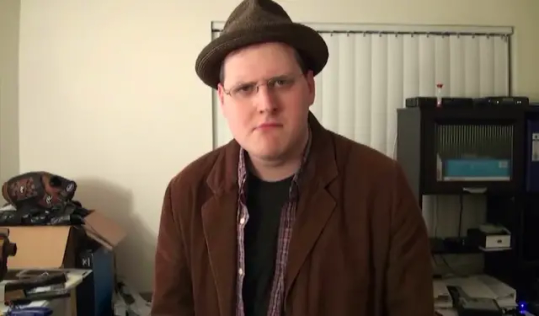
And even Dobson, though a bit late to the party, eventually became aware of the negative association the fedora developed online, which is actually the reason why he stopped wearing the hat altogether.
As he made known in a "humourous" fashion through this dumb SYAC strip...
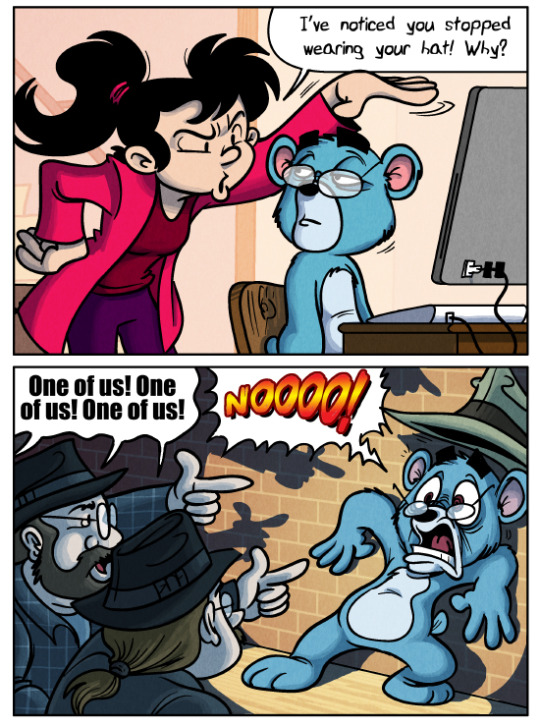
And would also confirm quite a few years later on twitter, when he ranted randomly about how internet creeps ruined the hat for him.
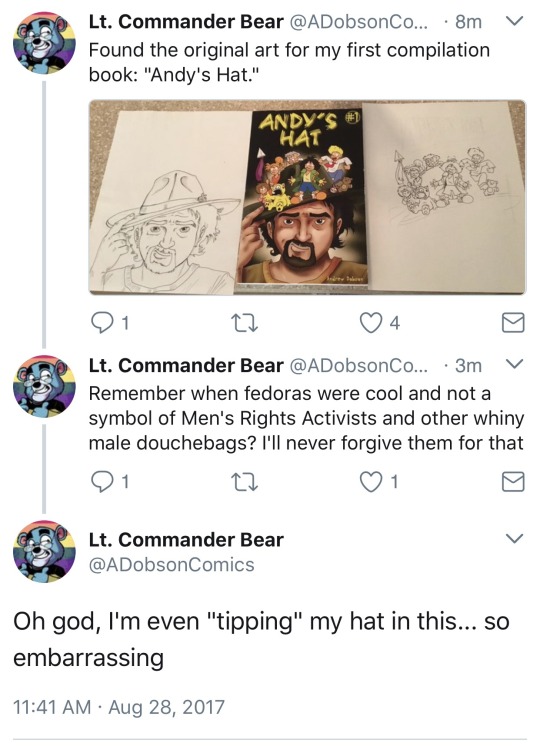
And as to be expected of Dobson, utter lack of self awareness. At all.
Cause honestly, if he thinks only male douchebags wear a fedora now... well, then he should have kept it on. After all, it fit him.
There is really not much here I can say than the following: If Dobson wanted NOT to be associated with (male) douchebaggery at all, then getting rid of his hat was not the right course of action. Cause being Dobson, it did not matter if he wore a fedora, 80s leggings, nothing, a plain white shirt or started vapping: A douchebag, is a douchebag independent of his choice of clothing.
Dobson wasn't seen as a douche because of his hat or rather a lack thereof.
He was a douche because he was condescending, creepy, acted like he was a semi authority at what "decent" and "progressive" entertainment is like/should be, despite a severe lack of actually creating stories of his own and many other reasons.
Heck, Dobson couldn't even be halfway "consistent" with the fact he abandoned his hat. After all, even in the years following that comic, he would occassionally still draw himself with the hat.
No, seriously. The comic condamning fedoras, according to the base timeline I can construct on the release date of the comics, indicate it to have come out sometime before 2014.
And then when he made his patreon campaign video in 2015... well, I unfortunately only have a modified version of that video found online, but guess what sort of headwear shows up in the "unedit" parts.
youtube
I hope that whatever happened with his hat, it found a better use than resting on his skull. Who knows, perhaps it was donated to the homeless and is now catching more money on average, than Dobson earned via patreon
#andrew dobson#fedora#my lady#adobsoncomic#adobsonartwork#adobsonsartwork#so...you are a cartoonist#syac#soyouareandrewdobson#comic#webcomic#tom preston#Youtube
8 notes
·
View notes
Photo
Blue is my most favorite color 💙

Vap slays an innocent pumpkin (2020, colourised)
257 notes
·
View notes
Text

twitchcon merch!!!
#the popplio is from owlburrow (aka vap comics) and the primarina is from TinyStarJelly#💙 baby sea lion 💙#💙 sweetest siren 💙#💜 mod tag 💜#there is other stuff that is unrelated to the theme of this blog
3 notes
·
View notes
Text
Dark Pit: Man, we don't know, like, anything. Pit: Hey, I know some things! Dark Pit: Like what? Pit: Pit: You've got me there.
#kid icarus#kid icarus uprising#kid icarus pit#dark pit#super smash bros#incorrect quotes#Source: vap comics
49 notes
·
View notes
Conversation
Happy: Man, we don't know, like, anything.
Natsu: Hey, I know some things!
Happy: Like what?
Natsu:
Natsu: You've got me there.
#happy the exceed#natsu dragneel#natsu continues to be a mood#happy continues to be a mood#fairy tail#source: vap comics#fairy tail incorrect quotes#incorrect quotes#incorrect fairy tail quotes#incorrect quote#anime#manga
192 notes
·
View notes
Conversation
Seokmin: Man, we don't know, like... anything.
Soonyoung: Hey, we know some things!
Seokmin: Like what?
Soonyoung:
Soonyoung: You've got me there.
#incorrect svt#incorrect svt quotes#incorrect seventeen quotes#incorrect kpop quotes#incorrect seventeen#soonyoung#seokmin#source: vap comics
113 notes
·
View notes
Conversation
Rock: Man, we don't know, like, anything.
Jyugo: Hey, I know some things!
Rock: Like what?
Jyugo:
Jyugo: You've got me there.
73 notes
·
View notes
Text
finally got my copy of Vap Comics Vol. 2 in!!
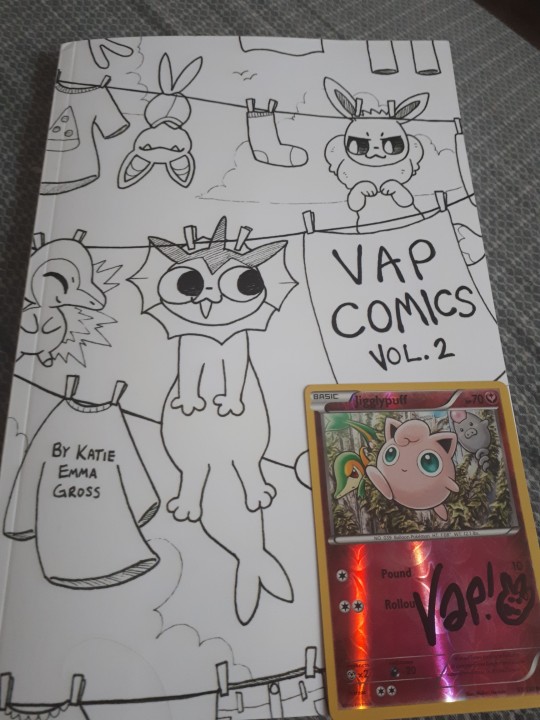
it even came with a signed jiggypuff card thats so cute!! might have to keep that up with my jigglypuff plushie
#i love these comics sm#vap comics good!! they dont all get posted on tumblr so i hadnt seen a lot of these but theyre very cute and fun#zoeybooks#zoeytalks
3 notes
·
View notes
Text
The Strengths of serialization: A Disenchantment analysis
Note: this is a script for a video I’m making. There are some generalised statements in this script, that will be accompanied with visuals in the final video to help specify what I am referring to.
So, Netflix just dropped part 3 of disenchantment, and with the new batch of episodes came a slew of worldbuilding, lore, characterization, laughs, adventures, and Elfo abuse. But, instead of giving an overview of everything that happened in the season (or part) I want to focus on one specific aspect of part 3 and compare this to parts 1 and 2 and that is, the serialisation of Disenchantment.
In television shows, there are two main formats a show can take: A serialized format and an episodic format. A serialized format has continuing storylines that span over the course of the entire season. Think of pretty much every drama show. By contrast, an episodic TV show presents each episode as a self contained story. Meaning you could jump in at any point in the series without needing much prior knowledge to understand what’s happening. This is the format that most animated sitcoms, such as Disenchantment’s contemporaries, The Simpsons and Futurama, went for.
Disenchantment was an interesting case as it seemed to be going for a mix of both serialization and self contained episodes throughout its first two parts, which made up season 1. The first few and last few episodes of both parts 1 and 2 had a serialized format, where the cliffhanger ending of one episode would lead directly into the opening of the next. For example part 2’s opening episode ‘The disenchantress’ ends with Bean walking down a staircase to hell, which is picked straight back up on again in the next episode, aptly titled ‘Staircase to hell’. It’s required that an audience member watches these two episodes in order, otherwise they would be confused by the opening of the latter.
But then the middle episodes of parts 1 and 2 were stand alone episodic adventures, that didn’t always directly tie into each other. For instance, the heist plot of ‘the Dreamland job’ has little to nothing to do with Derrik’s character journey in the following episode, ‘Love’s Slimy Embrace’. So not much would be lost on an audience member who watched these two episodes out of order. The main throughline between them is Lucie buying and owning the bar. But that’s a rather minor element of ‘Love's Slimby embrace’, it’s not like you need an explanation of why Lucie owns the bar to understand what’s happening in that episode.
Where Part 3 really differs from the previous two parts, is that it sticks to a more serilized format for most of its run. Pretty much every episode develops on something meaningful established in prior episodes. For instance, In the first episode of part 3 it’s revealed that Pendegast has been murdered, so the third episode ‘Beanie get your gun’ is spent investigating what happened to him. They find out it’s the priestess, and chase her down in the next episode, which naturally leads into the steam land sega covered in episodes 4 and 5, and then the boat trip back to Dreamland in episode 6. Even when an episode doesn’t end in a cliffhanger, the events that occurred in the previous episode will still be playing on the character’s mind in the next, keeping a constant narrative flow throughout part 3.
Now, I do not believe that serialized Television is inherently better than episodic Television. There are shows that owe their success to their episodic format.
But I think in Disenchantment’s case, serialization fits the tone and scope it’s going for.
Disenchantment is basically a mystery show, Part 3 opens with several overarching mysteries that are investigated over the course of the season, and Bean literally plays detective in two episodes.
Part 2 also presented several mysteries in its opening episodes, like Bean’s heritage and the secret treasure the elfs are looking for. But this became a frustration I had with part 2, as it felt like it was presenting the audience with several tantalising mysteries, but then avoided expanding on them, in favour of more non sequitur adventures. Take the episode ‘the lonely heart is a hunter’ for example. That episode has a subplot about Bean investigating some old runes that are hinted to have a connection to her mother. But this basically leads nowhere as Bean gets scared and gives up on investigating them. We don’t find out anything about them for the rest of part 2, halting that story in its tracks. What the episode chooses to develop instead is the relationship between Zogg and a bear woman named Ursula, a character who has only appeared in this single episode to date. I do actually enjoy this plot line, I think it’s funny and gives Zogg some decent character development. But when the episode prioritises a somewhat frivolous love affair over expanding on the mysteries it’s already set up, it can be frustrating to sit through, because I’m just waiting for them to get back to that mystery.
There are still some instances in part 3 where they bring up an unresolved mystery or plot line but don’t follow up on it straight away. Like it should annoy me that they mention Leaveos quest early in the season, only for it to not develop any further until the last episode.
But it doesn’t, because there’s a narrative excuse for the other character’s to abandon Leaveo and his plot line. They have the more pressing issue of Dagmar to deal with in that moment, and after that I’m so swept up in the murder and betrayl stuff that I don’t mind them leaving Leavo’s plot thread for a little longer.
Another result of part 3 taking a more serialised approach is that it makes meaningful changes to the Disenchantments status quo
After part 1 ended with several series altering cliffhangers, that seemed like it was taking the show in a radically different direction, I was disappointed by how in part 2 everything reverted back to normal by the end of episode 3. Sure, there were a few status quo changes, but for the most part, part 2 still followed Bean, Elfo and Lucie’s shenanigans around Dreamland, not that fundamentally different from part 1.
But this isn’t a criticism I can level at part 3. For one thing there are no episodes of Bean just goofing around drinking, she’s always trying to get somewhere, figure something out, or face some threat to the kingdom. The constant rising urgency prevents the show from feeling as if it’s in some stagnant status quo.
The only time I was in fear of Disenchantment resetting to a status quo was at the beginning of episode 3, ‘Beanie get your gun’, when Derrik reinstates power to Zogg, the towns people don’t care about Bean supposedly being a witch, and Zogg’s forgotten about Odvals and the priestess’s coup attempt
The characters even comment on how weird the situation is.
With Bean and Zogg being reinstated it almost seemed like the whole coup subplot had been entirely pointless, especially as the opening of the episode hinted that Pendergast might not actually have been killed.
But the episode’s ending underlines the lasting impact this coup had, by confirming Pendergast’s death and having the priestess become a fugitive from the kingdom, basically writing out two major supporting characters.
On the subject, Pendergast’s death is the first one in Disenchantment that I was genuinely shocked by. Just because of the show’s willingness to kill off a recurring character without going back on it. They have done similar deaths before, like when Jerry was killed. But Jerry was divorced enough from the main cast and the setting of Dreamland that his absence didn’t feel as noticeable. It’s not like his death bared any repercussions on how Dreamland functioned as a kingdom for example. But Pendergast’s death does, you’re reminded of his absence any time you watch a scene with Zogg losing his mind, or see turbish and Mertz without their commander. Even if Pendergast is somehow brought back later, his death was still felt throughout the whole of this season.
Part 3 of Disenchantment managed to capture my intrigue, by taking its story and characters to interesting new places. My hope for part 4 is that everything part 3 built toward gets a decent payoff. By the end of part 3 most of the plotlines have still been left open ended, with even more opening up and others being teased at. In one case it looks like they might be rehashing an older plotline.
My fear for part 4 is that all these storylines are going to trip over each other. That part four has to juggle so many different plotlines that it’s not going to be able to devote enough time to each of them, making their resolutions feel rushed and underdeveloped.
I think its on part 4 to intertwine all these plot threads, so everything comes together to form one satisfying conclusion. Unless they’re planning on continuing the show after part 4, in which case I hope part 4 is a more streamlined and focused version of part 3.
Speaking of satisfying conclusions… I couldn’t think of one for this video! So let’s end off by discussing three times Disenchantment part 3 referenced 3 other Matt Greoning cartoons.
Starting with the most obvious, the ‘Trip to the moon’ rollercoaster seen in the episode ‘Freak out’ is a reference to the second Futurama episode ‘’The series has landed’, where the planet express crew visit a theme park on the moon. In particular the rollercoaster’s moon face bares resemblance to the mascot crater face. Look, it even has part of the rollercoaster going through its eye, just like how craterface always has a beer bottle shoved through their eye. Which itself is a reference to a silent film from 1920 called ‘A Trip to the moon’. Wait actually maybe the rollercoaster is just supposed to be a reference to that.
Seconally, the joke about the kings servants Vip and Vap living in unlawful cohabitation is a reference to the characters Arkbah and Jeff, who are a gay couple from Matt Groening’s comic, Life in Hell. They also share similar character designs.
And finally, I don’t think this was intentional, but Elfo skating on Dagmars oily back reminded me of Bart Simpson skateboarding. Now try and get that image out of your mind! Good night everybody.
#just posting this to prove this script exists#I’ll post a link to the video on this blog when it’s done#But my YouTube channel is Mac Monkeyhat if you want to look me up in the mean time!#disenchantment
12 notes
·
View notes
Text
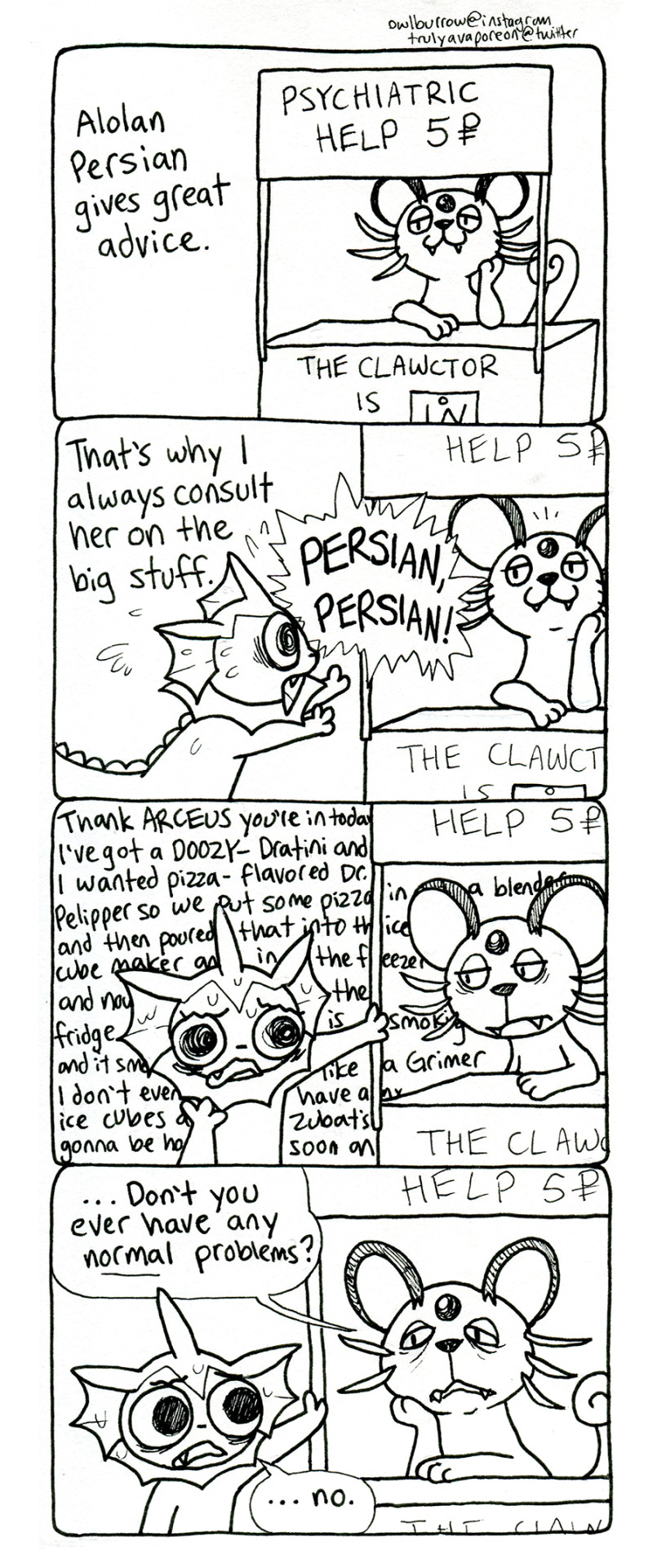
Persian's Advice 🤔
2K notes
·
View notes
Text
an emotional support pillow and his awkward future father in law
read it on AO3 at https://ift.tt/wfLJnN5 by thequestionisalwaysmangos Bruce was not expecting to find Clark’s clone watching HGTV in his manor at seven in the morning, but that’s what he got. Words: 885, Chapters: 1/1, Language: English Series: Part 4 of unrelated dc one-shots Fandoms: Batman - All Media Types, Batman (Comics), DCU (Comics) Rating: Not Rated Warnings: No Archive Warnings Apply Categories: M/M Characters: Bruce Wayne, Kon-El | Conner Kent, Jason Todd Relationships: Pre-Tim Drake/Kon-El | Conner Kent - Relationship Additional Tags: Tim is technically present, Awkward Conversations, Kon is still pissed about the Titans Tower thing but he’s biding his time, Bruce is a Very Awkward Person, a VAP, if you will, Kon isn’t even dating tim yet, but he knows his competition and is already gunning for favorite son-in-law read it on AO3 at https://ift.tt/wfLJnN5
1 note
·
View note
Photo

NordicBalt presents Anime, Manga, Otaku, Comics, Webcomics, Webtoons News >> https://ift.tt/2yPaZUN << ||
VAP Schedules ‘The Seven Deadly Sins: Wrath of the Gods’ Anime DVD/BD Box Sets >> https://ift.tt/33nsxF3 <<
2 notes
·
View notes
Photo
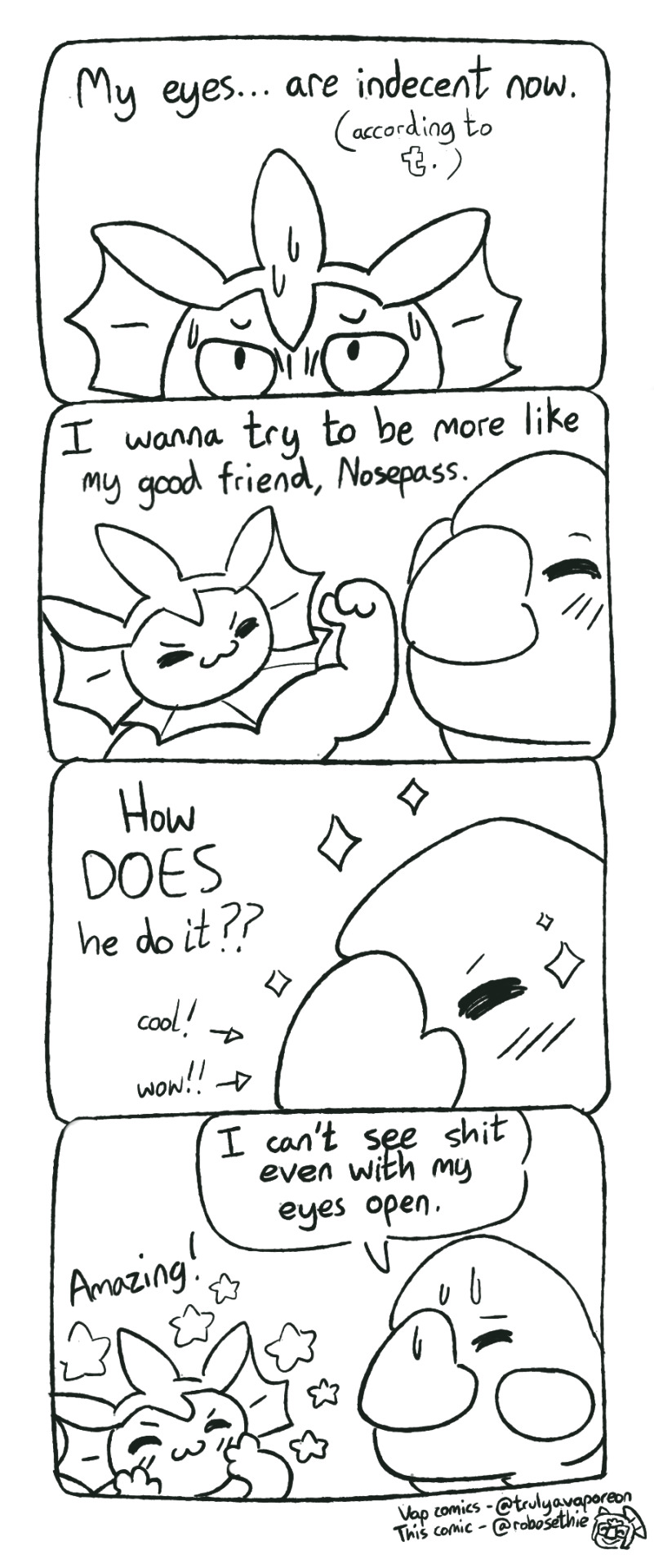
He’s so talented!
@theowlburrow for more Vap comics. This is a fancomic!
369 notes
·
View notes
Text
Mario Movie Madness - The Great Mission to Rescue Princess Peach (1986) / Super Mario Bros. (1993)
youtube
When it comes to story in video games, Donkey Kong was the originator. The first game to have an actual narrative with characters, Donkey Kong followed the simple plot of an everyman who rescues his love interest from a hot-headed brute. When Super Mario Bros. premiered on the Famicom a few years later there were a lot of changes, but the core story was still there. Mario, who was once a carpenter, must rescue the Princess from Bowser, just like he rescued Pauline from Donkey Kong.
This simple narrative would be the perfect motivation for someone to play through the game from start to finish. Seeing the Princess rescued from Bowser would be a perfect reward for braving through eight dangerous worlds. Would this be enough to hold up a movie, or a tv show, or a comic?
For a time in the late 80’s and early 90’s, Nintendo were more willing to license out their properties to be made into movies and cartoons. Japan saw one anime film, Super Mario Bros.: The Great Mission to Rescue Princess Peach, as well as a series of Original Video Animation releases. The United States got several syndicated cartoons produced by DiC (who also produced the Sonic the Hedgehog cartoons), as well as a live action Hollywood movie produced by Disney.
It was definitely the most interesting time to be a video game fan.
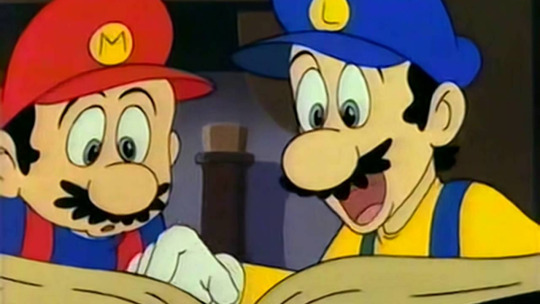
Super Mario Bros: The Great Mission to Rescue Princess Peach!
Japan in the mid-1980’s was in full on Mario fever after the success of the Famicom and Super Mario Brothers. By 1985 Nintendo was already selling merchandise featuring everyone’s favorite mushroom-gobbling plumber, by now it was only natural to move into film. Being that Nintendo is a Japanese company it was only natural that they test the waters of media adaptations with an anime film.
On July 20th, 1986, Super Mario Bros.: The Great Mission to Rescue Princess Peach was released in Japanese theaters. The film was produced by Grouper Productions in collaboration with Nintendo, and was released on home video by VAP Video. The movie is an oddity in the Super Mario franchise, in that it has never seen any sort of re-release.
The movie had a relatively large marketing campaign, including tie-in merchandise and commercials featuring the Mario characters. Despite this, once the initial release window had closed the film would never be released again. This meant it would never see the light of day outside of Japan, and would lead to the film’s merchandise being among the more rare Mario related collectibles.

What’s interesting about this movie, and what could possibly be the reason behind its suppression, is that it was the first real depiction of the Super Mario characters outside of the video games. Of course, there were commercials and the animated series Saturday Supercade featured Mario characters. At the time things weren’t set in stone regarding Mario. It wasn’t until Super Mario Bros. that establishing canon and lore, as well as defined character designs, would become a priority.
This movie’s production would have occurred alongside the development of Super Mario Bros. 2, known as The Lost Levels in the West, so the designs and characters are almost entirely based on those found in the first Super Mario Bros. This is the first time we see Luigi as being taller than Mario, and this is also the first time he’s presented as a comical sidekick who almost doesn’t want to be there.
Mario is presented as the typical every man hero who wants to save the day. Peach is presented in what would become her final design, going against what the American cartoons would be doing with giving her brown hair. Bowser is shown as having a romantic motivation for kidnapping the Princess, which is something that wouldn’t be shown in the games until later by that point.

One thing that caught my ear was how the video game’s musical cues and sound effects are used comedically here. This is something that later American cartoons would also do, though its not clear if they’ve seen The Great Mission to Rescue Princess Peach before production or not. There are a lot of similarities between the anime movie and the American tv shows. For example, Mario and Luigi’s love of food, which would also become a staple of the games.
The most charming part of this movie is the soundtrack. While some musical cues come right from the games themselves, there are several montage scenes featuring a bouncy rock and roll soundtrack. The songs are catchy and infectious, one could easily find themselves humming the tunes hours after hearing them.
Super Mario Bros.: The Great Mission to Rescue Princess Peach is a great little animated movie that establishes or predicts character elements that would come to define the franchise. It’s a short movie at only an hour long, but it’s worth every minute. It’s a light hearted, tongue-in-cheek cartoon that’s aware of its video game origins and plays it up for laughs.
So, if it’s so good, why haven’t Nintendo re-released it? A couple of reasons, with the most obvious being licensing rights. When the movie was produced Nintendo were still new to success of this scale. It’s possible that the agreements made when the movie was first thought up would have each company involved hold onto some of the rights. The musicians, the production company, the home video distributor, there’s a good chance each of them own a piece of the movie. For Nintendo to wrestle the rights away from them could be a logistical nightmare.
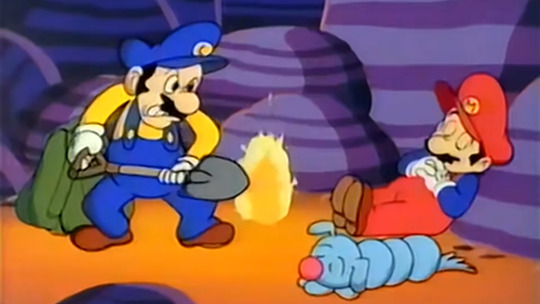
Another reason for its lack of international release: cultural references. At the time the movie came out in Japan anime was just starting out in the West. What little anime was available in the United States was often butchered in the editing room in order to make it appealing to a Western audience. This included any references to Japanese culture, producers wanted to mask the fact that they were importing foreign shows and movies rather than creating new content.
Nintendo in 1986 were more concerned with making sure Western audiences were buying their games, especially after the video game crash of 1983 made video games a tough sell. By the time Nintendo was comfortable enough to start thinking of cartoons, they had decided to make Mario media aimed specifically at a Western audience. This would result in The Super Mario Bros. Super Show, based on the American version of Super Mario Bros. 2, as well as a few other shows based on Super Mario Bros. 3 and Super Mario World.
Of course, none of that would compare to what Nintendo were planning for 1993. Hollywood had come a knockin’, and Nintendo gave their blessings for a Disney produced live-action Super Mario Bros. movie.
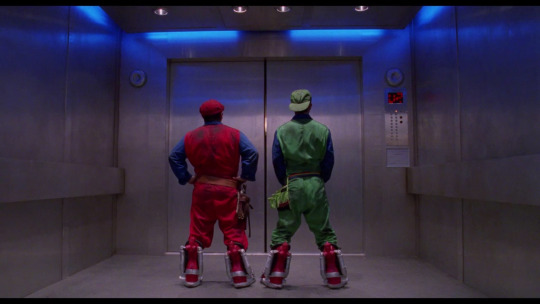
Super Mario Bros. (1993)
The 1980’s were a true golden age of cinema aimed at young audiences. Steven Spielberg, George Lucas, Robert Zemeckis, these were the directors who shaped movies at the time. Back to the Future, E.T., The Goonies, Ghostbusters were all hits, but none of them would hold a candle to Tim Burton’s Batman. It was the last great summer blockbuster of the 80’s, and it would set the tone for the 90’s.
After Batman claimed the Summer of ‘89, every studio realized what the next big thing would be: adaptations of comic books and video games. The assumption was always that comic books and video games were the lowest forms of entertainment, but both hit it off big time in the time leading up to and following the release of Batman.
One of the properties picked up in the post-Batman rush was Super Mario Bros., the production company Lightmotive met with Nintendo and an agreement was made. The producers originally wanted Danny DeVito to play Mario, Tom Hanks to play Luigi, and either Arnold Schwarzenegger or Michael Keaton to play Koopa. In the end they would settle on Bob Hoskins as Mario, John Leguizamo as Luigi, and Dennis Hopper as King Koopa. Disney would distribute the movie under their Hollywood Pictures banner.

The movie was released to theaters on May 28th, 1993 to critical and commercial failure. Too dark for kids, too childish for adults, it failed to resonate with any audience during its theatrical run. It was released on home video shortly after and faded away into pop culture obscurity, only to be mentioned at video game trivia nights at dive bars.
Problems with the cast and crew, a poorly organized production shoot, and a pair of directors who made repeated changes to the script well into filming resulted in a movie that’s best described as a mess. Supposedly the original vision was a lot better and stayed true to the spirit of the games. The end result is a movie that tried to imitate what was successful before it without understanding what made those movies successful.
Super Mario Bros isn’t a bad movie, like most things people claim are the “worst ever” it’s never as bad as people make it seem. It follows the Mario Brothers, Mario and Luigi, who are plumbers in Brooklyn just trying to get by. One day they bump into Daisy, who’s an archaeologist digging for dinosaur bones in Brooklyn. While out to dinner with the Mario Brothers, Daisy winds up getting kidnapped by King Koopa’s goons, and it's up to Mario and Luigi to save her.
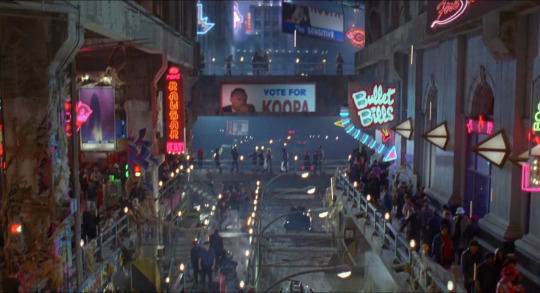
The Mario Brothers head to “Dino-Hatten”, a parallel cyberpunk dystopia ruled by King Koopa. When the meteor killed out the dinosaurs on Earth it didn’t kill them, but sent them to another world where the dinosaurs would evolve into people. The city is covered in fungus and neon signs, and it feels like a real world with thousands of unique individual stories. Stories that would probably be much more interesting than what this movie ended up as.
The cast is legitimately great, there’s no denying that. Bob Hoskins, John Leguizamo, and Dennis Hopper are some serious big names in acting, and they delivered solid performances. They’re the definition of “doing the best we can with what we have to work with.” The cast have good chemistry together, possibly due to a mutually shared distaste for the directors. There’s also stories about the cast drinking and partying together when they weren’t on set.
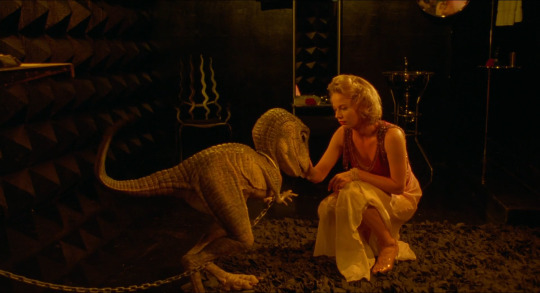
Personally speaking, I always loved Super Mario Bros. I rented the video tape as a kid and watched it every day for a week. It’s not a very good movie, it wont ask the important questions and answer them in under two hours, but it is an enjoyable flick. It’s not very true to the source material, but it references the source material enough for me not to mind. It takes the video game storyline and does it’s own thing with it.
In contrast to The Great Mission to Rescue Princess Peach, Super Mario Bros. doesn’t look so good. The anime film just had so much more to offer in terms of a coherent plot and a cute, self-aware plot, whereas Super Mario Bros. felt like a much bigger film that fell hard. Its funny how widely available the live action Super Mario Bros. movie is when the anime film is so much better. Both movies, however, are great novelty moments in the history of video games, especially the history of Super Mario.
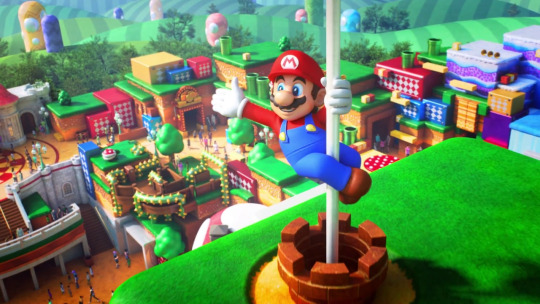
It’s been twenty five years since Nintendo has let anyone adapt their most sacred works, with exceptions for Pokemon and Kirby. This is directly caused by Hollywood’s failure to deliver on a big budget Super Mario Bros. film that would be a critical and commercial success, on the same level or surpassing that of the games. Nintendo’s philosophy has always been to focus on what they do best, and that’s not to say they didn’t try.
In 2015 Nintendo announced a deal with Universal Studios to allow Universal to create a Nintendo themed area in their international theme parks, with an eye on Tokyo and Orlando specifically. This deal opened up speculation as to whether or not Nintendo were trying to get back in bed with Hollywood. In July of 2016 this speculation would be confirmed as it was announced that Universal would be distributing a live action Pokemon movie based on the game Detective Pikachu.
The biggest news to come out of the Nintendo/Universal deal would come in January 2018 with the announcement of Nintendo partnering up with Illumination Entertainment. Illumination is the studio responsible for the Despicable Me series, and now they’re on board to produce a CG animated movie based on the Super Mario Bros franchise. Will it be more successful than the previous attempts? Well, it can’t be any worse at least!
Where to Buy
The Great Mission To Rescue Princess Peach (Not Available)
Super Mario Bros. (DVD/Blu-Ray)

Click Here To Support Y2K Fun Zone On Patreon
#Super Mario#Super Mario Anime#Super Mario Movie#Mario#Nintendo#anime#Hollywood Pictures#Disney#Super Mario Bros Super Show#Super Mario Bros The Great Mission to Rescue Princess Peach
2 notes
·
View notes